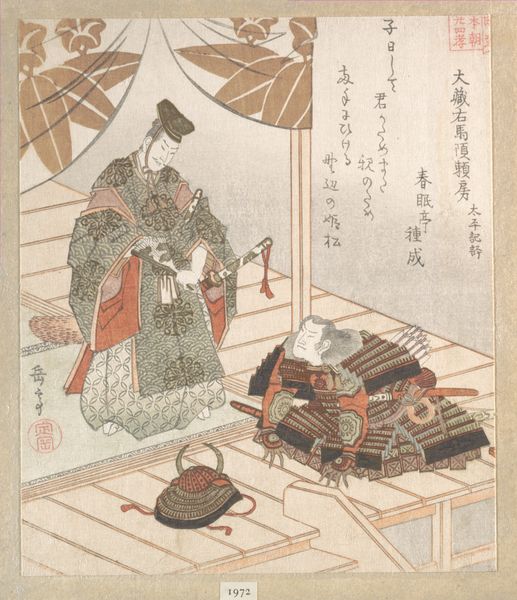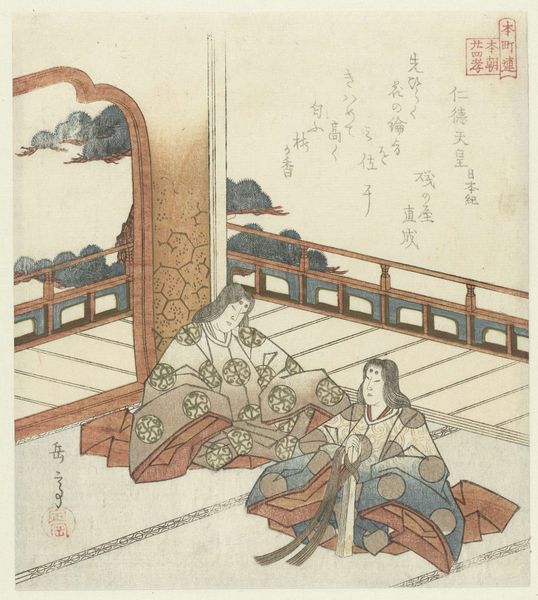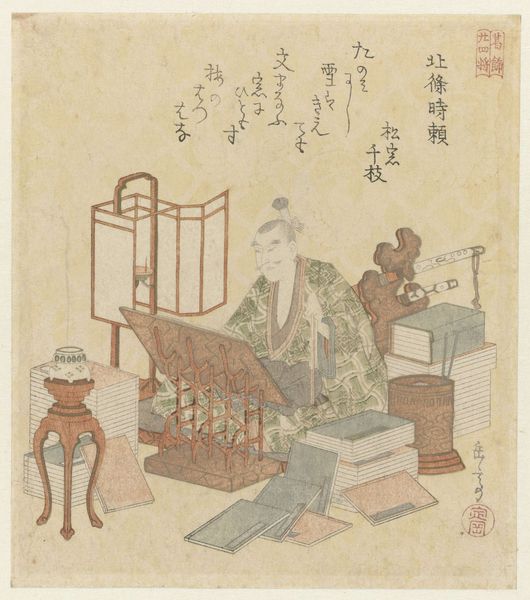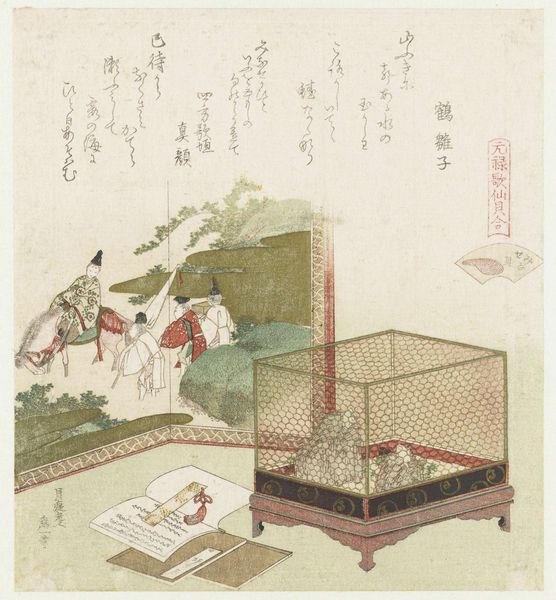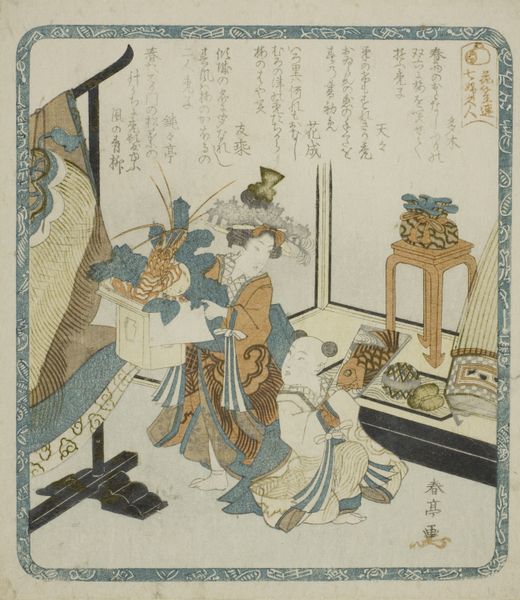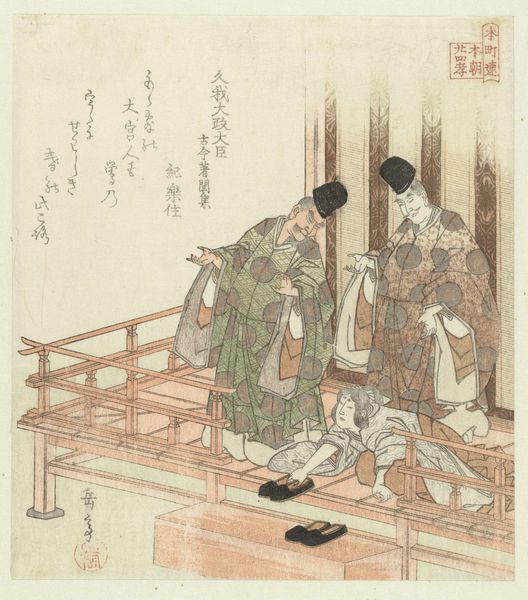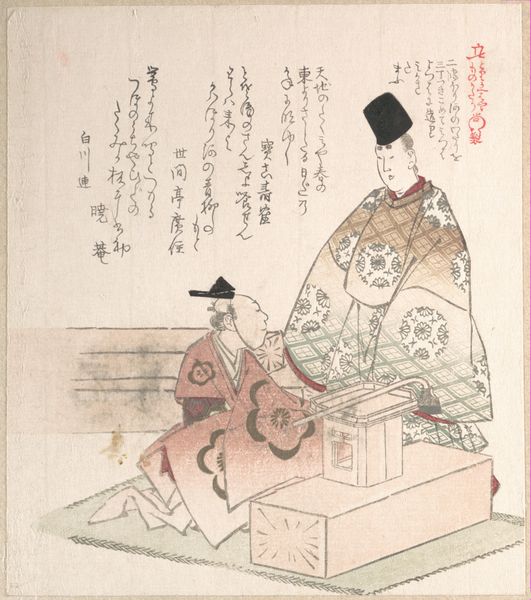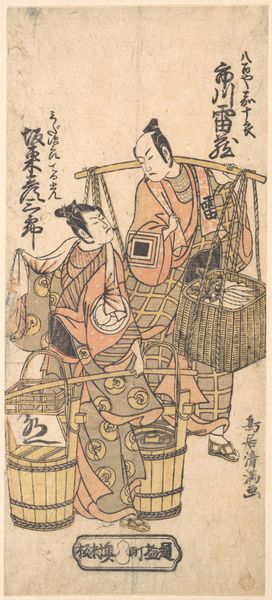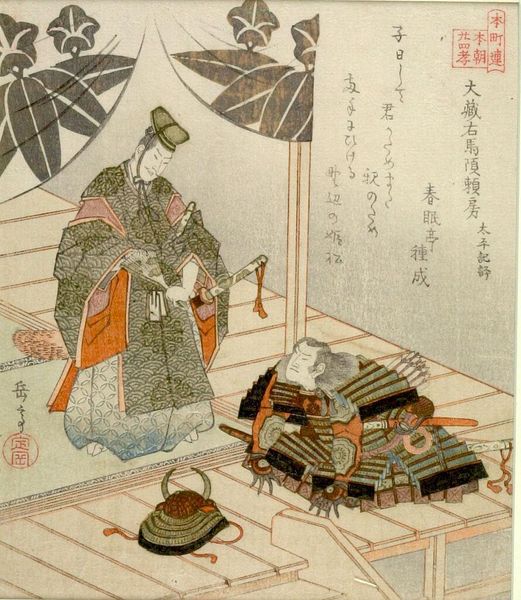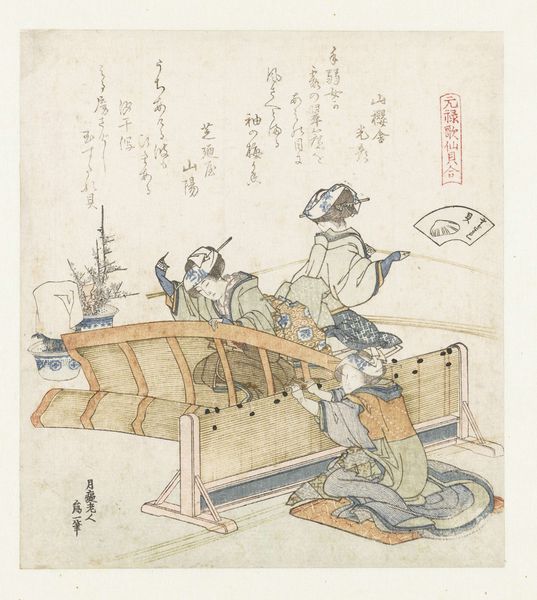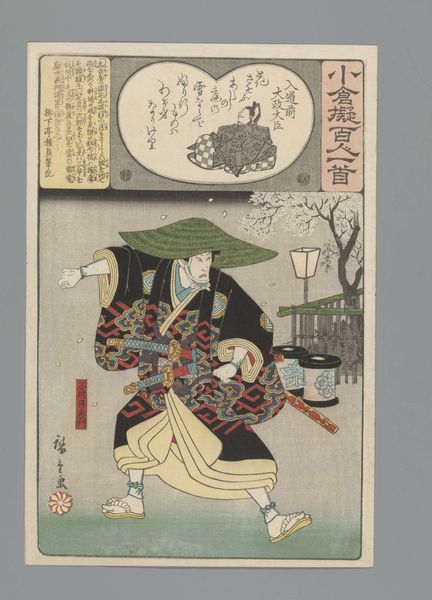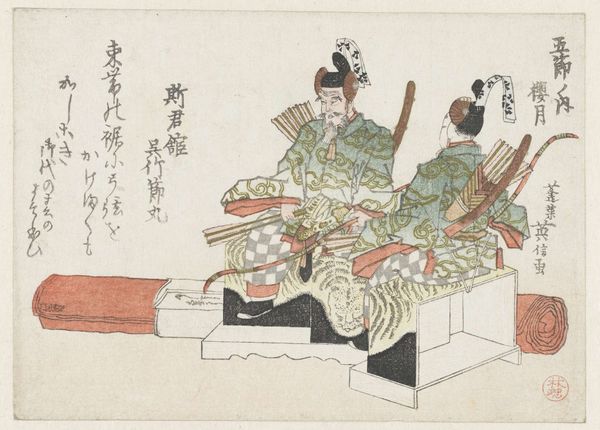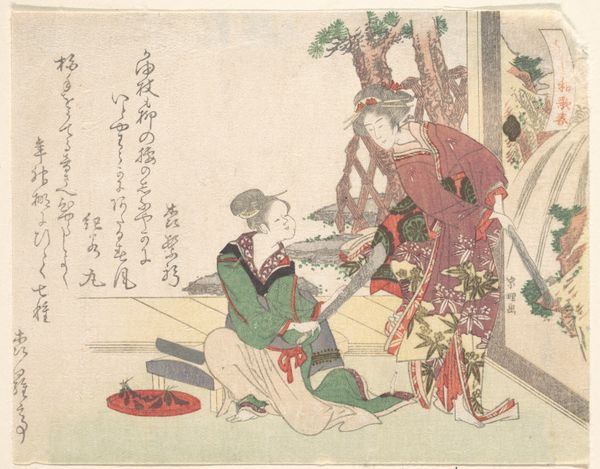
Twenty-four Japanese examples of filial piety for the Honchôren c. 1821
0:00
0:00
print, woodblock-print
#
portrait
#
narrative-art
# print
#
asian-art
#
ukiyo-e
#
figuration
#
woodblock-print
#
history-painting
Dimensions: height 205 mm, width 183 mm
Copyright: Rijks Museum: Open Domain
Yashima Gakutei created this woodblock print, "Twenty-four Japanese examples of filial piety for the Honchôren" in Japan sometime in the first half of the 19th century. It presents a clear visual narrative which emphasizes social and cultural values. The print uses visual codes to highlight the cultural emphasis on filial piety, a cornerstone of Confucian ethics. The composition, with the son standing over his father, visually reinforces the hierarchical relationship, while their clothing and accoutrements clearly indicate their social status. The setting, likely a domestic interior, further emphasizes the personal and private nature of filial duty. This print likely reflects the conservative social norms promoted by the Tokugawa shogunate, which endorsed Confucianism to maintain social order. However, it could also be seen as critiquing the samurai class. Further research into the Honchôren and popular culture of the time might reveal more about the artist's intent. The print's emphasis on traditional values invites us to consider the complex interplay between art, social norms, and power structures in 19th-century Japan.
Comments
No comments
Be the first to comment and join the conversation on the ultimate creative platform.
